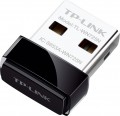—
External. Outdoor antennas tend to be larger than indoor antennas, and they usually have swivel mounts that allow the rod to be placed in the optimal position, regardless of the position of the device itself. All this has a positive effect on signal strength. In addition, there are removable external antennas — if desired, they can be replaced with more powerful ones. The main disadvantage of this option can be called bulkiness.
— Internal. Antennas located inside the case are considered less advanced than external ones. In most cases, they are smaller, and the performance depends on the position of the device (although many manufacturers use technologies to compensate for this effect). At the same time, equipment with
internal antennas has a neat appearance without unnecessary protruding parts.
— External / internal. The presence in the device at once of both types of antennas described above (in this case, there may be more than one of those and others). The presence of several antennas improves the quality of communication, but if they are all external, the device may turn out to be too bulky. Therefore, in some models of routers, a compromise is used: part of the antennas is hidden in the case, which has a positive effect on compactness and appearance.
The presence
of a removable antenna(or several antennas) in the design of the device.
Only external antennas can be made removable (see "Type of antennas"). This design is especially convenient for storage and transportation: it allows you to remove external equipment, making the device less bulky. In addition, many devices with this feature allow replacement of standard antennas with others (for example, more powerful ones or with a more optimal radiation pattern). Some of these models are even initially sold without antennas — in the expectation that the user will choose them himself, at his discretion; such equipment is not needed for domestic use, but it can be very convenient when selecting high-quality professional equipment. On the other hand, the detachable design reduces the reliability of the antenna mounting, increases the possibility of failures at the connection point, and increases the cost of the device. Therefore, most modern Wi-Fi equipment is still equipped with
fixed antennas.

